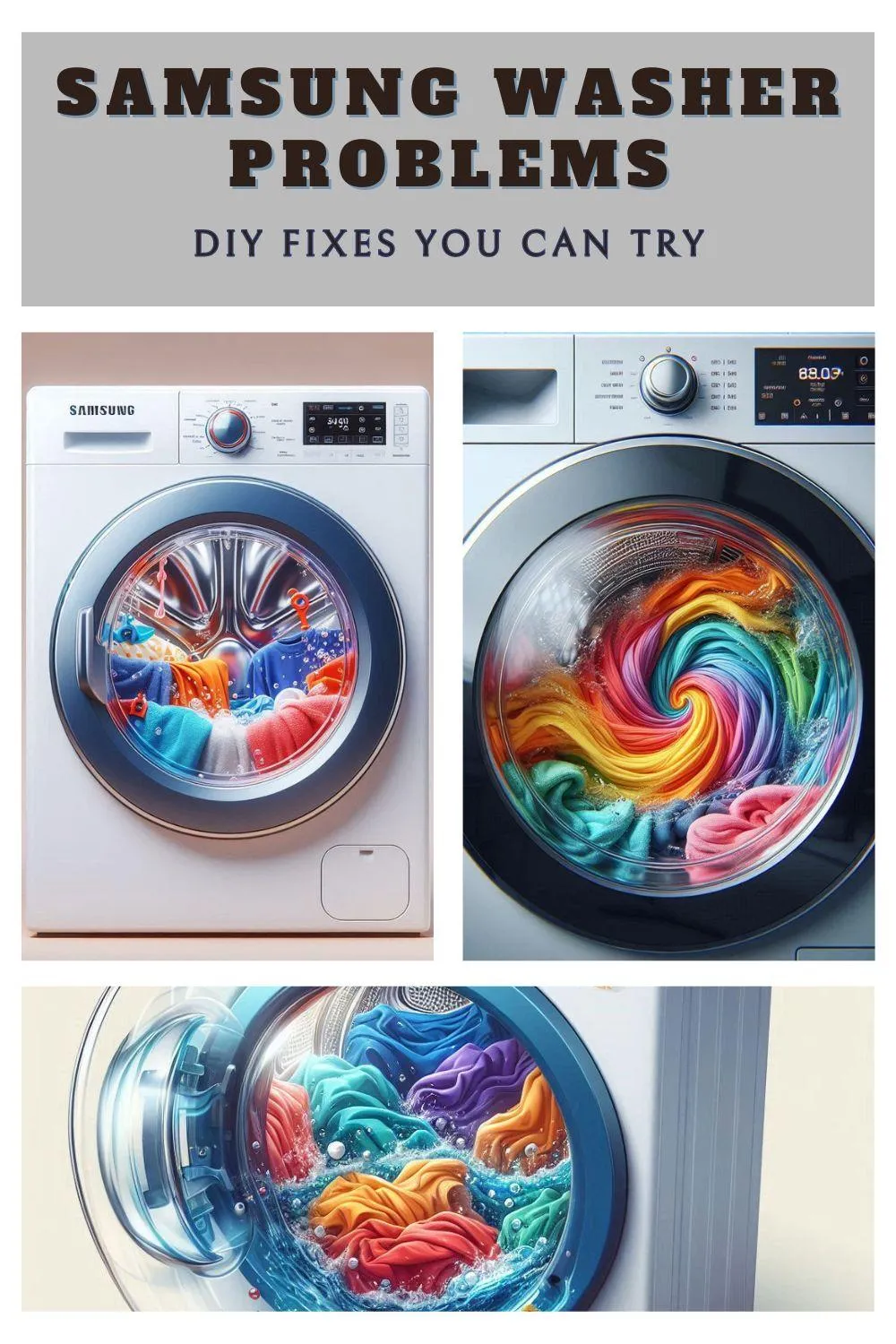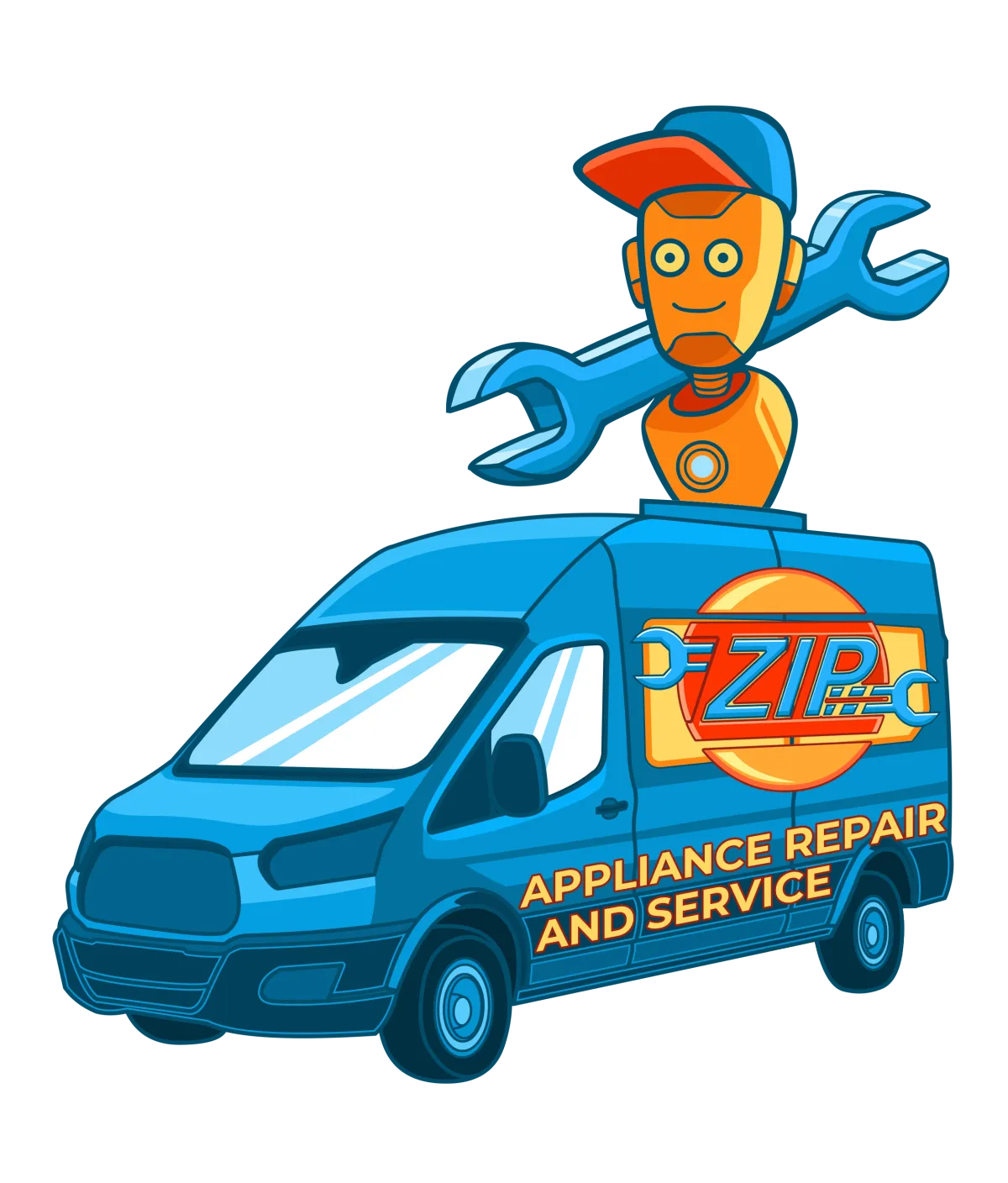Phone: (559) 272-4265
Appliance Repair Tips For Bakersfield, CA Residents

Top 7 Samsung Washer Problems and How to Fix Them
"Learn how to tackle the top 7 Samsung washer problems and how to fix them, ensuring your laundry day stays hassle-free and efficient." - Appliance Boss
Introduction:
Samsung washers are renowned for their cutting-edge technology and reliability. However, like any appliance, they can encounter issues that disrupt their functionality. Understanding these problems and how to address them can save you time, money, and frustration. This guide will walk you through the top 7 Samsung washer problems and provide detailed solutions to fix them.

Overview of Common Samsung Washer Problems
Samsung washers, while generally reliable, are prone to certain issues. Common problems include the washer not starting, not spinning, not draining, excessive vibration and noise, the door not locking, leaking water, and error codes. These issues can be frustrating but are often fixable with a bit of troubleshooting and some DIY repair.
Why Addressing Washer Issues is Important
Ignoring washer issues can lead to more significant problems down the line, such as water damage, increased energy bills, and the need for costly repairs. By addressing these issues promptly, you can extend the lifespan of your washer, ensure it operates efficiently, and maintain the quality of your laundry.
Understanding Your Samsung Washer Model
Before diving into specific problems, it's essential to understand your Samsung washer model. Different models may have unique features and common issues. Refer to your user manual for model-specific information and troubleshooting tips.
Identifying the Top 7 Samsung Washer Problems
Let's explore the most prevalent issues users face with Samsung washers and how to resolve them.
Problem 1: Washer Not Starting
Common Causes of a Non-Starting Washer
A washer that won't start can be caused by various issues, including a faulty power supply, a malfunctioning door latch, or a problem with the control panel.
Simple Checks Before Calling a Technician
Before calling a technician, ensure the washer is plugged in, the circuit breaker hasn't tripped, and the door is securely closed. Also, check for any error codes displayed on the control panel.
DIY Fixes for a Non-Starting Washer
If these checks don't solve the problem, try resetting the washer by unplugging it for a few minutes and then plugging it back in. If the issue persists, you may need to inspect and possibly replace the door latch or control panel.
Problem 2: Washer Not Spinning
Reasons Your Washer Might Not Spin
A washer that doesn't spin can result from an unbalanced load, a faulty lid switch, or a worn-out drive belt.
Easy Fixes for Spinning Issues
First, ensure the load is balanced and not too heavy. If the washer still doesn't spin, inspect the lid switch and replace it if necessary. Additionally, check the drive belt for wear and replace it if it's damaged.
When to Seek Professional Help
If these fixes don't resolve the issue, it may be time to call a professional. Problems with the motor or transmission can be complex and require expert attention.
Problem 3: Washer Not Draining
Possible Causes for Drainage Problems
Drainage issues are often caused by clogged hoses, a blocked pump, or a malfunctioning drain pump.
Steps to Clear Drainage Blockages
Check and clean the drain hose and pump filter. Remove any obstructions that might be causing the blockage.
Preventative Measures for Future Draining Issues
To prevent future drainage problems, avoid overloading the washer and regularly clean the pump filter and drain hose.
Problem 4: Excessive Vibration and Noise
Why Your Washer Shakes and Makes Noise
Excessive vibration and noise can be caused by an unbalanced load, uneven flooring, or worn-out shock absorbers.
Balancing Your Washer for Smooth Operation
Ensure the washer is level and the load is evenly distributed. Adjust the leveling legs if necessary.
Solutions to Reduce Vibration and Noise
If the washer is still noisy, inspect the shock absorbers and replace them if they are worn out. Using anti-vibration pads can also help reduce noise.
Problem 5: Washer Door Not Locking
Understanding Door Lock Mechanisms
The door lock mechanism ensures the door stays closed during the wash cycle. A malfunctioning lock can prevent the washer from starting.
Troubleshooting Door Lock Issues
Check for any obstructions in the door latch and clean it. If the door lock mechanism is faulty, it may need to be replaced.
Fixing Door Locks on Your Own
Replacing the door lock mechanism can be a straightforward DIY task with the right tools and instructions from your user manual.
Problem 6: Washer Leaking Water
Common Sources of Leaks in Washers
Leaks can originate from the hoses, door seal, or the detergent drawer.
Inspecting and Replacing Hoses
Check the hoses for cracks or loose connections and replace them if necessary. Ensure the connections are tight.
Quick Fixes for a Leaking Washer
Inspect the door seal for damage and clean it regularly. If the detergent drawer is leaking, clean it thoroughly and ensure it's not overfilled.
Problem 7: Washer Error Codes
Decoding Common Samsung Washer Error Codes
Error codes can indicate specific issues with the washer. Refer to your user manual to decode these codes.
Steps to Resolve Error Code Issues
Once you identify the error code, follow the troubleshooting steps provided in the manual. This may involve resetting the washer or inspecting specific components.
Resources for Further Error Code Troubleshooting
For persistent error codes, consult online resources or contact Samsung customer support for further assistance.
Regular Maintenance Tips for Samsung Washers
Cleaning and Care Tips for Optimal Performance
Regularly clean the drum, detergent drawer, and filter to prevent build-up and ensure optimal performance.
Scheduling Routine Check-ups
Schedule periodic check-ups with a professional to maintain your washer's efficiency and catch potential issues early.
When to Call in a Professional
If DIY fixes don't resolve the issue, it's best to call a professional. Complex problems like motor or transmission failures require expert attention.
Finding Reliable Samsung Washer Repair Services
Look for certified Samsung repair services in your area. Read reviews and ask for recommendations to find a reliable technician.
Conclusion
Recap of the Top 7 Problems and Fixes
In summary, we've covered the top 7 Samsung washer problems and their solutions. Addressing these issues promptly can keep your washer running smoothly.
Encouragement to Tackle Washer Issues Confidently
With the right knowledge and tools, you can tackle many washer issues yourself. Don't hesitate to seek professional help when needed.
Additional Resources and Helpful Links
For further assistance, refer to your user manual, Samsung's customer support, or reputable online repair guides. Regular maintenance and prompt repairs will ensure your washer's longevity and efficiency.
For professional help, contact Zip Appliance and Plumbing Repair. Visit us at www.ziprepairservice.com or call us at (661) 387-2282.

Top 7 Samsung Washer Problems and How to Fix Them
"Learn how to tackle the top 7 Samsung washer problems and how to fix them, ensuring your laundry day stays hassle-free and efficient." - Appliance Boss
Introduction:
Samsung washers are renowned for their cutting-edge technology and reliability. However, like any appliance, they can encounter issues that disrupt their functionality. Understanding these problems and how to address them can save you time, money, and frustration. This guide will walk you through the top 7 Samsung washer problems and provide detailed solutions to fix them.

Overview of Common Samsung Washer Problems
Samsung washers, while generally reliable, are prone to certain issues. Common problems include the washer not starting, not spinning, not draining, excessive vibration and noise, the door not locking, leaking water, and error codes. These issues can be frustrating but are often fixable with a bit of troubleshooting and some DIY repair.
Why Addressing Washer Issues is Important
Ignoring washer issues can lead to more significant problems down the line, such as water damage, increased energy bills, and the need for costly repairs. By addressing these issues promptly, you can extend the lifespan of your washer, ensure it operates efficiently, and maintain the quality of your laundry.
Understanding Your Samsung Washer Model
Before diving into specific problems, it's essential to understand your Samsung washer model. Different models may have unique features and common issues. Refer to your user manual for model-specific information and troubleshooting tips.
Identifying the Top 7 Samsung Washer Problems
Let's explore the most prevalent issues users face with Samsung washers and how to resolve them.
Problem 1: Washer Not Starting
Common Causes of a Non-Starting Washer
A washer that won't start can be caused by various issues, including a faulty power supply, a malfunctioning door latch, or a problem with the control panel.
Simple Checks Before Calling a Technician
Before calling a technician, ensure the washer is plugged in, the circuit breaker hasn't tripped, and the door is securely closed. Also, check for any error codes displayed on the control panel.
DIY Fixes for a Non-Starting Washer
If these checks don't solve the problem, try resetting the washer by unplugging it for a few minutes and then plugging it back in. If the issue persists, you may need to inspect and possibly replace the door latch or control panel.
Problem 2: Washer Not Spinning
Reasons Your Washer Might Not Spin
A washer that doesn't spin can result from an unbalanced load, a faulty lid switch, or a worn-out drive belt.
Easy Fixes for Spinning Issues
First, ensure the load is balanced and not too heavy. If the washer still doesn't spin, inspect the lid switch and replace it if necessary. Additionally, check the drive belt for wear and replace it if it's damaged.
When to Seek Professional Help
If these fixes don't resolve the issue, it may be time to call a professional. Problems with the motor or transmission can be complex and require expert attention.
Problem 3: Washer Not Draining
Possible Causes for Drainage Problems
Drainage issues are often caused by clogged hoses, a blocked pump, or a malfunctioning drain pump.
Steps to Clear Drainage Blockages
Check and clean the drain hose and pump filter. Remove any obstructions that might be causing the blockage.
Preventative Measures for Future Draining Issues
To prevent future drainage problems, avoid overloading the washer and regularly clean the pump filter and drain hose.
Problem 4: Excessive Vibration and Noise
Why Your Washer Shakes and Makes Noise
Excessive vibration and noise can be caused by an unbalanced load, uneven flooring, or worn-out shock absorbers.
Balancing Your Washer for Smooth Operation
Ensure the washer is level and the load is evenly distributed. Adjust the leveling legs if necessary.
Solutions to Reduce Vibration and Noise
If the washer is still noisy, inspect the shock absorbers and replace them if they are worn out. Using anti-vibration pads can also help reduce noise.
Problem 5: Washer Door Not Locking
Understanding Door Lock Mechanisms
The door lock mechanism ensures the door stays closed during the wash cycle. A malfunctioning lock can prevent the washer from starting.
Troubleshooting Door Lock Issues
Check for any obstructions in the door latch and clean it. If the door lock mechanism is faulty, it may need to be replaced.
Fixing Door Locks on Your Own
Replacing the door lock mechanism can be a straightforward DIY task with the right tools and instructions from your user manual.
Problem 6: Washer Leaking Water
Common Sources of Leaks in Washers
Leaks can originate from the hoses, door seal, or the detergent drawer.
Inspecting and Replacing Hoses
Check the hoses for cracks or loose connections and replace them if necessary. Ensure the connections are tight.
Quick Fixes for a Leaking Washer
Inspect the door seal for damage and clean it regularly. If the detergent drawer is leaking, clean it thoroughly and ensure it's not overfilled.
Problem 7: Washer Error Codes
Decoding Common Samsung Washer Error Codes
Error codes can indicate specific issues with the washer. Refer to your user manual to decode these codes.
Steps to Resolve Error Code Issues
Once you identify the error code, follow the troubleshooting steps provided in the manual. This may involve resetting the washer or inspecting specific components.
Resources for Further Error Code Troubleshooting
For persistent error codes, consult online resources or contact Samsung customer support for further assistance.
Regular Maintenance Tips for Samsung Washers
Cleaning and Care Tips for Optimal Performance
Regularly clean the drum, detergent drawer, and filter to prevent build-up and ensure optimal performance.
Scheduling Routine Check-ups
Schedule periodic check-ups with a professional to maintain your washer's efficiency and catch potential issues early.
When to Call in a Professional
If DIY fixes don't resolve the issue, it's best to call a professional. Complex problems like motor or transmission failures require expert attention.
Finding Reliable Samsung Washer Repair Services
Look for certified Samsung repair services in your area. Read reviews and ask for recommendations to find a reliable technician.
Conclusion
Recap of the Top 7 Problems and Fixes
In summary, we've covered the top 7 Samsung washer problems and their solutions. Addressing these issues promptly can keep your washer running smoothly.
Encouragement to Tackle Washer Issues Confidently
With the right knowledge and tools, you can tackle many washer issues yourself. Don't hesitate to seek professional help when needed.
Additional Resources and Helpful Links
For further assistance, refer to your user manual, Samsung's customer support, or reputable online repair guides. Regular maintenance and prompt repairs will ensure your washer's longevity and efficiency.
For professional help, contact Zip Appliance and Plumbing Repair. Visit us at www.ziprepairservice.com or call us at (661) 387-2282.
If your dryer has been giving you problems, contact Zip Appliance Repair & Service at (661) 387-2282

Appliance Repair In A Zip
If you need a dryer repair call our Team at (661) 387-2282, or visit our online scheduling page to request service.
Appliance Repair
Plumbing Repair Services
HAVE A QUESTION, CALL (661) 387-2282

Online Offers
Take advantage of our online discount offers - save time and money...

Residential & Commercial appliances
See what our company can do for you

Appliance Repair Tips
If your appliance is not working properly...

1405 Commercial Way ste 100
Bakersfield, CA 93309
Lic # 1116346
Equipment We Sevice
- A Call To Confirm Your Appointment Time
- A Email Detailing Your Assigned Technician
- Information Needed Before The Repair Can Be Started
- An Estimate Of Work To Be Done
© 2025 ZIP APPLIANCE REPAIR & SERVICE LLC








